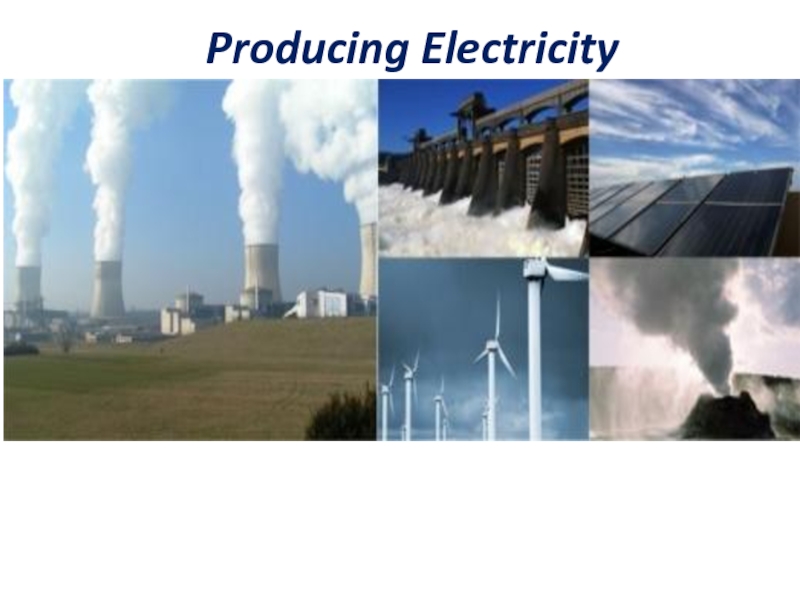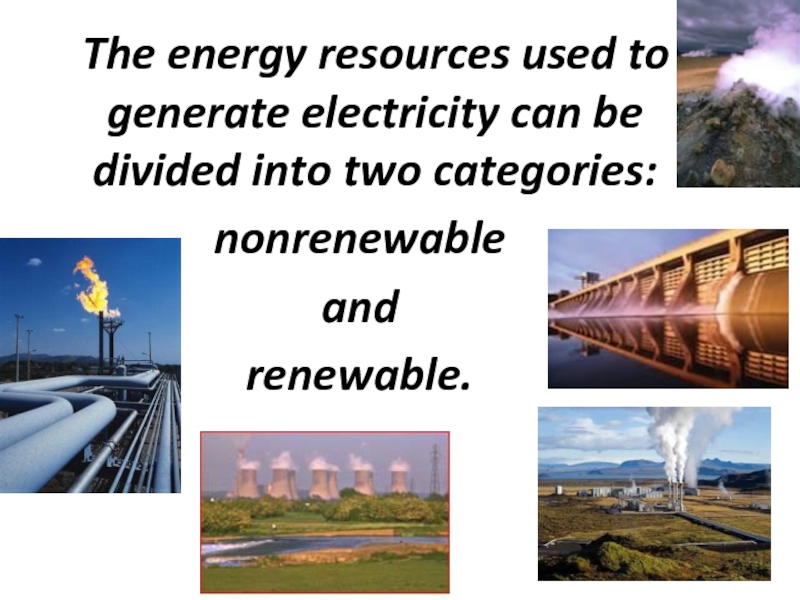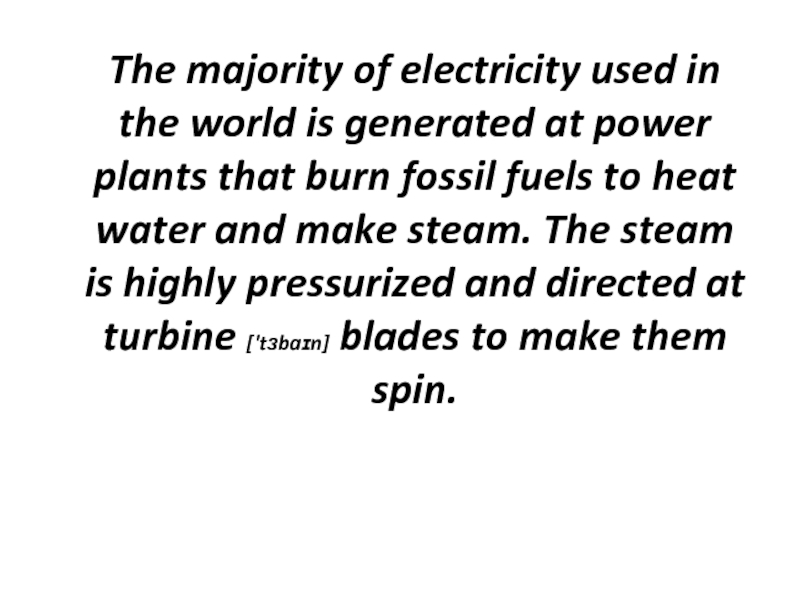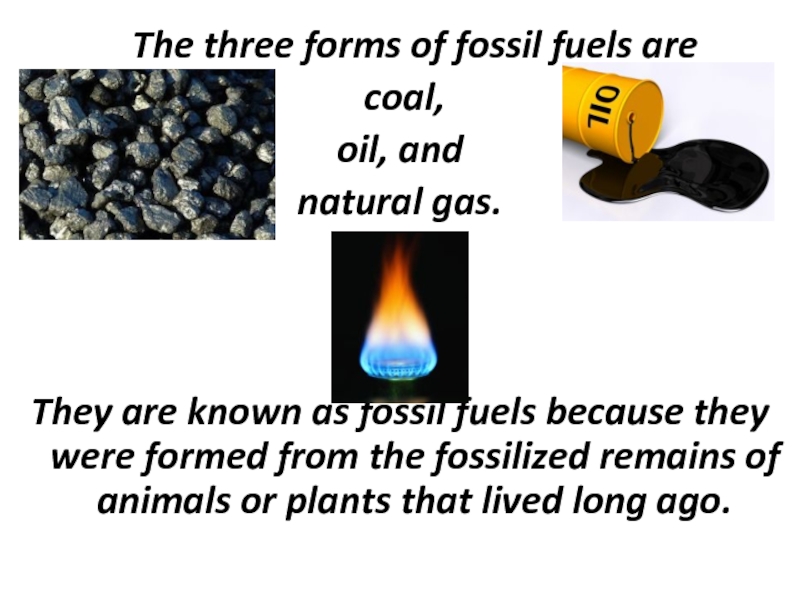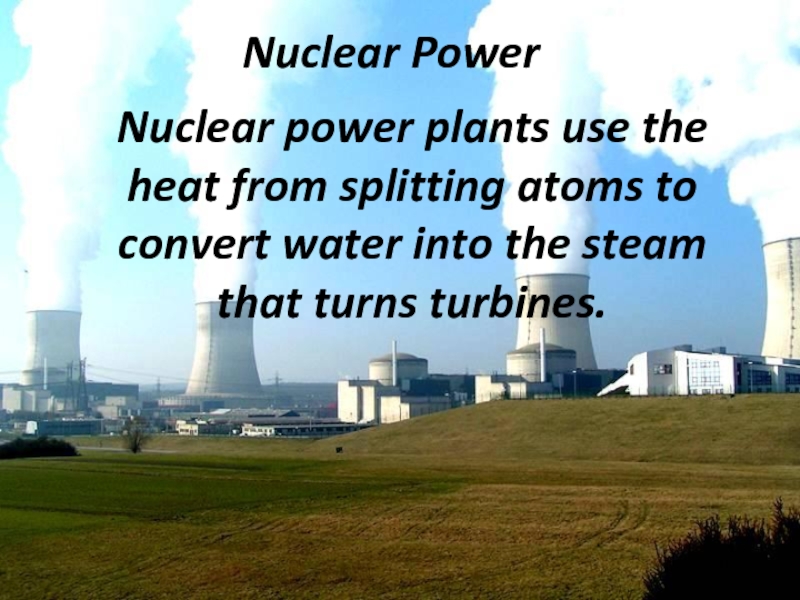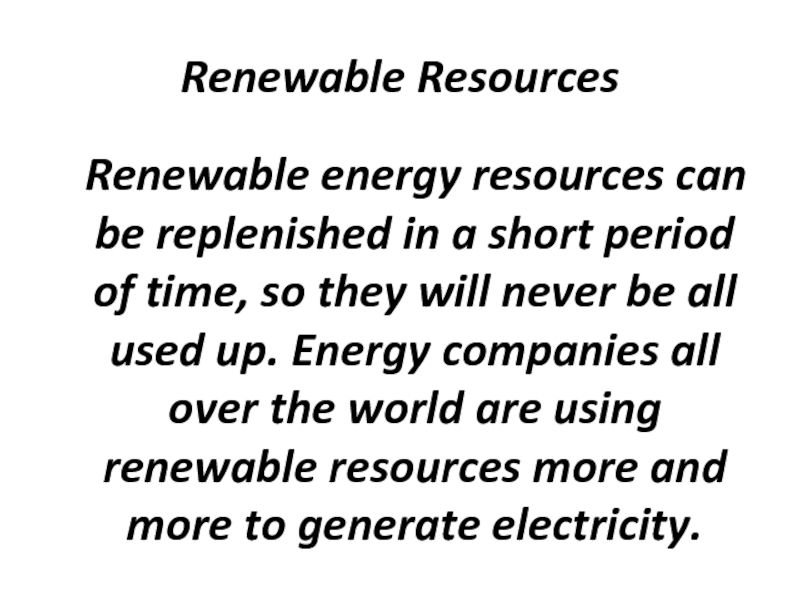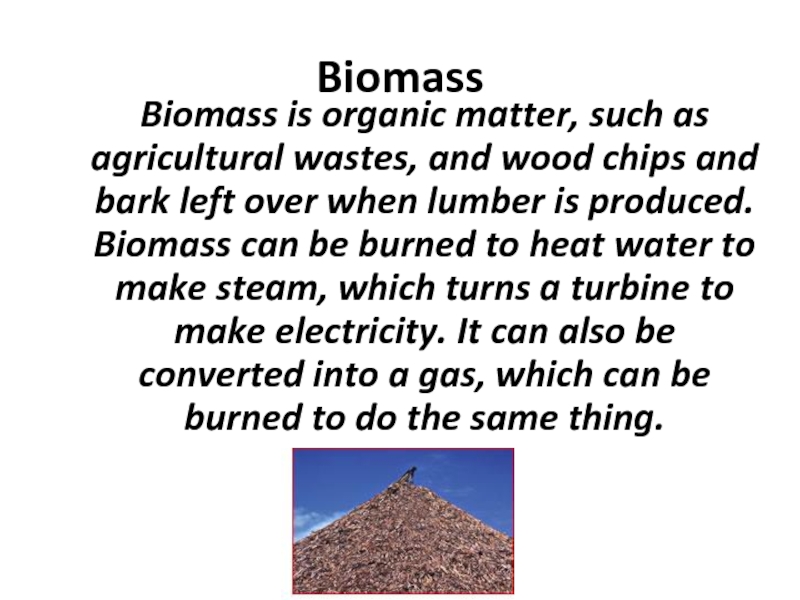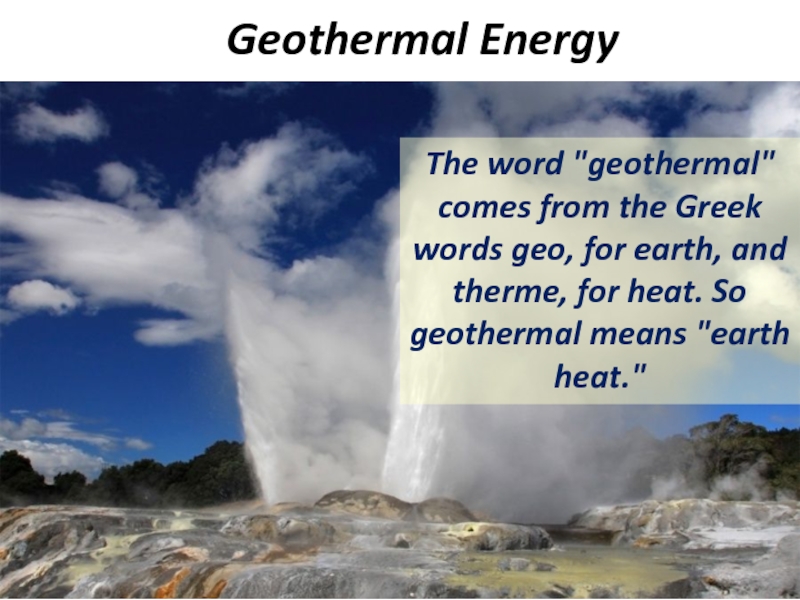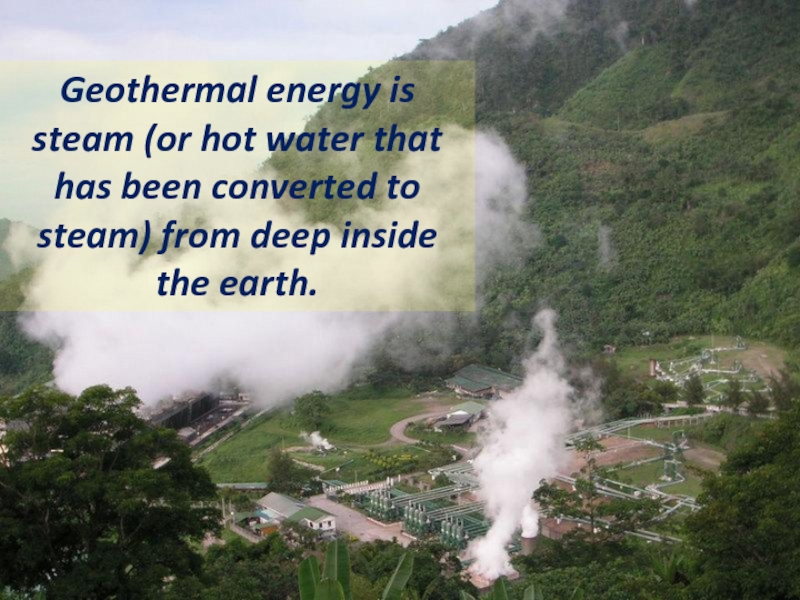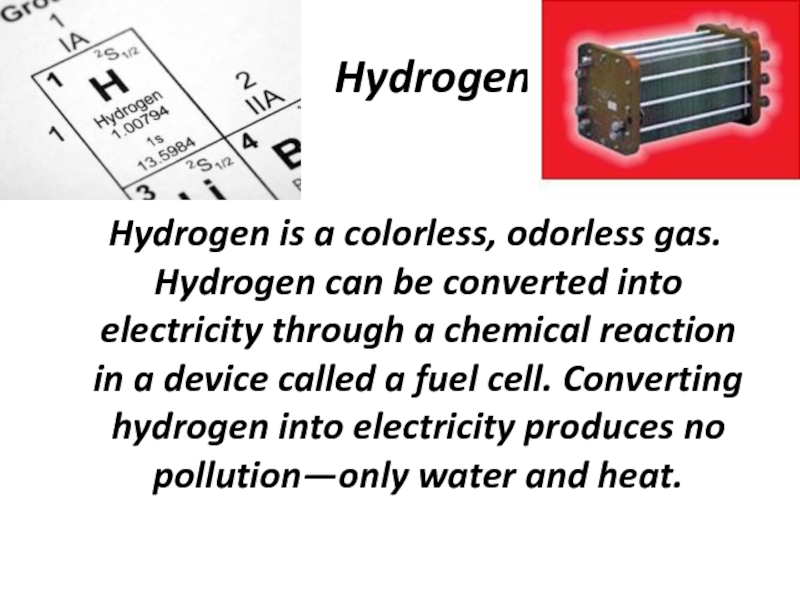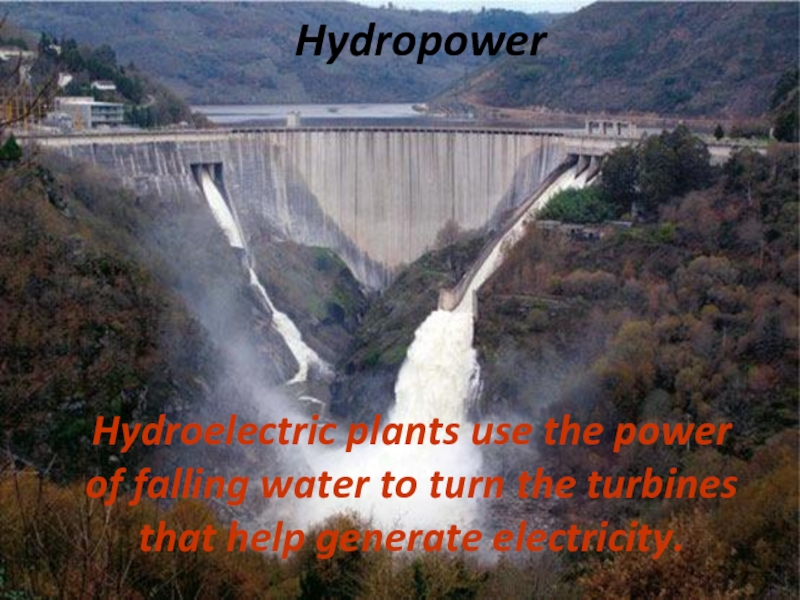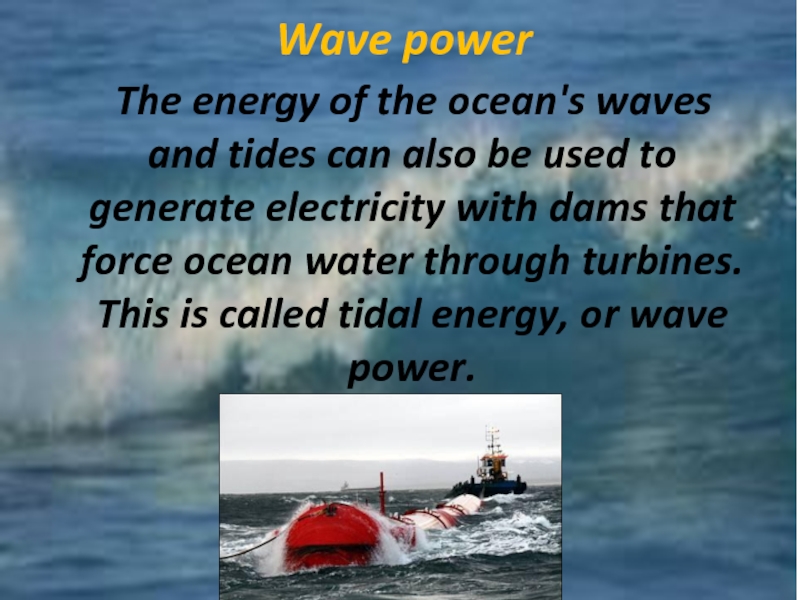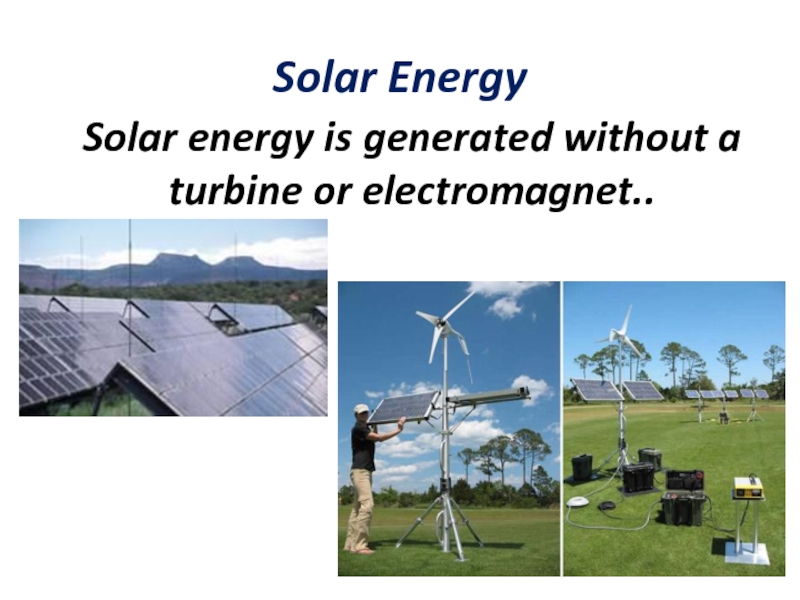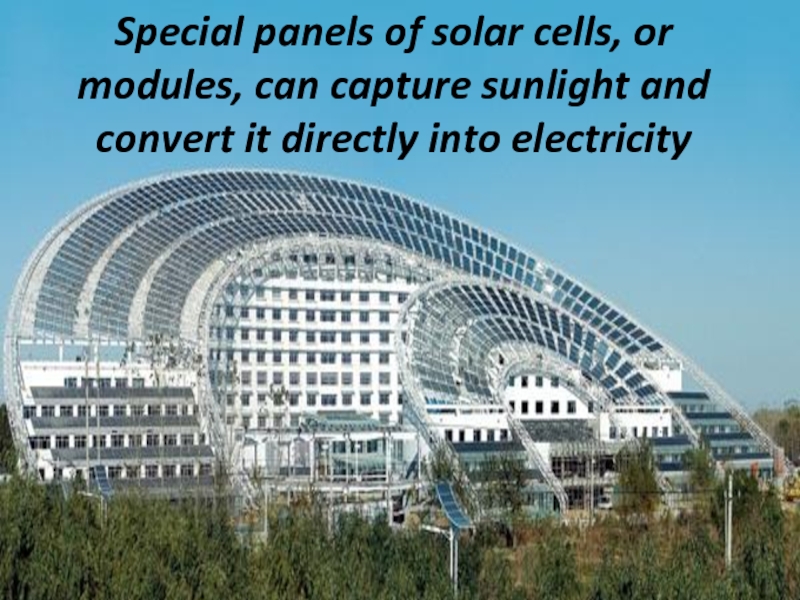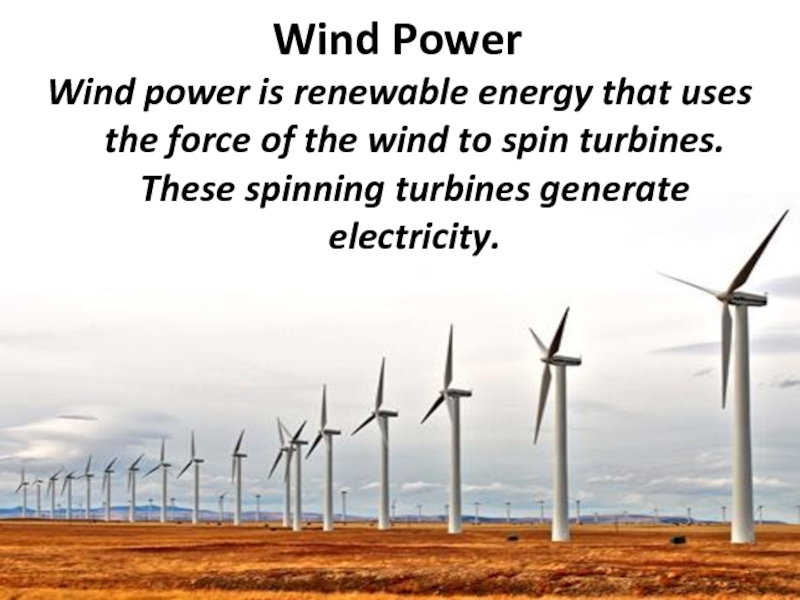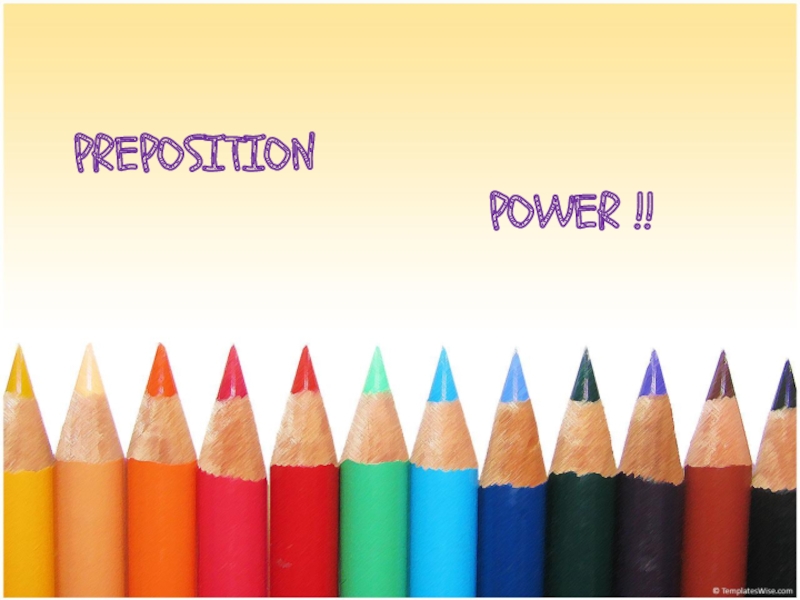- Главная
- Разное
- Дизайн
- Бизнес и предпринимательство
- Аналитика
- Образование
- Развлечения
- Красота и здоровье
- Финансы
- Государство
- Путешествия
- Спорт
- Недвижимость
- Армия
- Графика
- Культурология
- Еда и кулинария
- Лингвистика
- Английский язык
- Астрономия
- Алгебра
- Биология
- География
- Детские презентации
- Информатика
- История
- Литература
- Маркетинг
- Математика
- Медицина
- Менеджмент
- Музыка
- МХК
- Немецкий язык
- ОБЖ
- Обществознание
- Окружающий мир
- Педагогика
- Русский язык
- Технология
- Физика
- Философия
- Химия
- Шаблоны, картинки для презентаций
- Экология
- Экономика
- Юриспруденция
Producing electricity презентация
Содержание
- 1. Producing electricity
- 2. The energy resources used
- 3. Nonrenewable resources cannot be
- 4. The majority of electricity
- 5. The three forms of
- 6. Nuclear Power Nuclear power plants use
- 7. Renewable Resources Renewable energy resources
- 8. Biomass Biomass is organic matter, such
- 9. Geothermal Energy The word
- 10. Geothermal energy is steam (or hot
- 11. Hydrogen Hydrogen is a colorless,
- 12. Hydropower Hydroelectric plants use the power
- 13. Wave power The energy of
- 14. The world's first wave
- 15. Solar Energy Solar energy is generated without a turbine or electromagnet..
- 16. Special panels of solar cells, or
- 17. Wind Power Wind power is renewable energy
- 18. A very large wind farm can
Слайд 2
The energy resources used to generate electricity can be
divided into two categories:
nonrenewable
and
renewable.
nonrenewable
and
renewable.
Слайд 3
Nonrenewable resources cannot be increased. We can make these
supplies last longer by using them wisely, but when they are gone we will not have any more.
Слайд 4
The majority of electricity used in the world is
generated at power plants that burn fossil fuels to heat water and make steam. The steam is highly pressurized and directed at turbine ['tɜbaɪn] blades to make them spin.
Слайд 5
The three forms of fossil fuels are
coal,
oil,
and
natural gas.
They are known as fossil fuels because they were formed from the fossilized remains of animals or plants that lived long ago.
natural gas.
They are known as fossil fuels because they were formed from the fossilized remains of animals or plants that lived long ago.
Слайд 6Nuclear Power
Nuclear power plants use the heat from splitting atoms to
convert water into the steam that turns turbines.
Слайд 7Renewable Resources
Renewable energy resources can be replenished in a
short period of time, so they will never be all used up. Energy companies all over the world are using renewable resources more and more to generate electricity.
Слайд 8Biomass
Biomass is organic matter, such as agricultural wastes, and wood chips
and bark left over when lumber is produced. Biomass can be burned to heat water to make steam, which turns a turbine to make electricity. It can also be converted into a gas, which can be burned to do the same thing.
Слайд 9Geothermal Energy
The word "geothermal" comes from the Greek words
geo, for earth, and therme, for heat. So geothermal means "earth heat."
Слайд 10
Geothermal energy is steam (or hot water that has been converted
to steam) from deep inside the earth.
Слайд 11Hydrogen
Hydrogen is a colorless, odorless gas. Hydrogen can be
converted into electricity through a chemical reaction in a device called a fuel cell. Converting hydrogen into electricity produces no pollution—only water and heat.
Слайд 12Hydropower
Hydroelectric plants use the power of falling water to turn the
turbines that help generate electricity.
Слайд 13Wave power
The energy of the ocean's waves and tides
can also be used to generate electricity with dams that force ocean water through turbines. This is called tidal energy, or wave power.
Слайд 14
The world's first wave power station is on the
Scottish island of Islay. It generates enough electricity for about 400 homes.
Слайд 16
Special panels of solar cells, or modules, can capture sunlight and
convert it directly into electricity
Слайд 17Wind Power
Wind power is renewable energy that uses the force of
the wind to spin turbines. These spinning turbines generate electricity.
Слайд 18
A very large wind farm can generate enough electricity for all
the homes in a city of about one million people.
